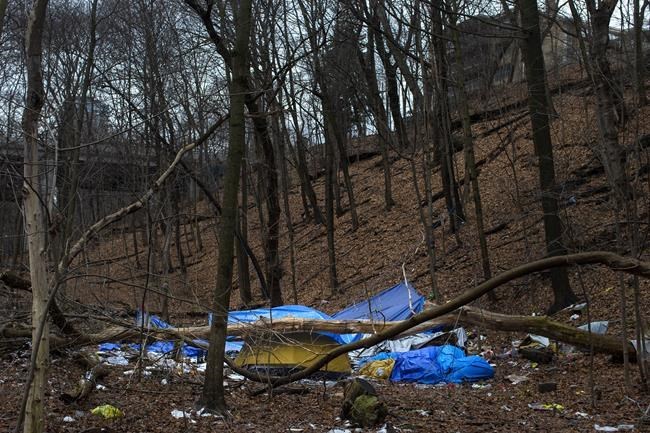TORONTO — When Dr. Carolyn Snider arrives for her early morningemergency room shifts, she regularly sees between five and 10 people in the waiting area who don't need medical attention— just a safe place to stay warm.
"(They're) truly there to just stay out of the elements," said Snider, chief of the emergency department at St. Michael's Hospital in downtown Toronto.
"This has already been occurring this fall. I can't even imagine what will be occurring over the upcoming (winter) months," she said.
There's been a significant increase in the number of homeless peopletaking refuge in downtown Toronto emergency departments over the last few winters, Snider said. She and colleaguesdid some research to see if they could quantify what they were seeing.
The resulting study, published on a pre-print website Tuesday, examined data that had been collected from hospitals across Ontario, documenting ER visits from the winter of 2018-19 through to last winter, ending March 31, 2023.
It found that across Ontario, non-urgent emergency department visits among people who are homeless increased by 24 per cent across the province over those five winters.
In Toronto hospitals specifically, those cold-weather ER visits by homeless people skyrocketed by 68 per cent.
The researchers submitted the study for publication in a peer-reviewed journal, but chose to release the results earlier out of a sense of urgency as the days and nights get colder.
"We wanted to get this information out right away because we think that it can help inform the policy decisions that are being made right now about shelter spaces," said Dr. Stephen Hwang, the study's senior author and a physician-researcher at the MAP Centre for Urban Health Solutions based at St. Michael's Hospital.
"When we have high levels of homelessness and not enough shelter beds for people ... the emergency department is the shelter of last resort. It's the warming centre of last resort," Hwang said.
The health administrative data used for the study came from the Canadian Institute for Health Information, the Institute for Clinical Evaluative Sciences and an Ontario Health Insurance Plan database.
Because no records existed to document whether homeless people said they had come to the emergency department specifically to get warm, the researchers eliminated some other possible reasons they might have come.
For example, the researchers "excluded visits related to care for COVID-19 or overdose, both (of) which are known to account for significant fluctuations in ED usage in this population," the study said.
There was no significant increase in non-urgent ER visits by people who were housed over the study period.
Sometimes people who are homeless will come into the emergency department and let staff know that they need help finding shelter, Snider said, and then calls to the shelter system show there are no vacancies.
A "larger proportion" of people who are homeless arrive at the ER and say they're concerned about their feet, she said.
"Sometimes it's that we need to provide them with some warm and clean socks because they don't have those," Snider said.
Other times, "they've been in multiple times over the last months with concerns about their feet when in fact there's actually no concerns about their feet," she said.
"They're there to get shelter and they know they've got a few hours to wait before a physician will even be available to see them about their feet," Snider said.
"And I don't blame them because they're there for survival reasons."
The study results don't surprise Stephen Gaetz, head of the Canadian Observatory on Homelessness based at York University.
Gaetz was not involved in the study but said "the results are to be trusted."
"One of the things we need to come to terms with in our response to homelessness is that if we do not provide people with access to adequate housing that is safe, affordable and appropriate, as well as necessary supports if they have health and or mental health challenges, then we shouldn’t be surprised that people experiencing homelessness are going to make decisions that we may not like," Gaetz said in an email to The Canadian Press.
"If we don’t like people experiencing homelessness going to emergency services at hospitals, sleeping in tents or in parks, or sleeping and keeping warm on the subway, then we should prioritize getting people housed," he said, noting that preventing people from becoming homeless in the first place is also important.
Longer-term housing solutions are vital, but it's also urgent to increase access to safe shelters and warming centres this winter, study co-authorHwang said.
"We just need to ensure that at a bare minimum, that there are ways for people to get out of the cold and not be injured by hypothermia or frostbite," he said.
"And that should not be a chair in the emergency department waiting room."
This report by The Canadian Press was first published Nov. 28, 2023.
Canadian Press health coverage receives support through a partnership with the Canadian Medical Association. CP is solely responsible for this content.
Nicole Ireland, The Canadian Press

